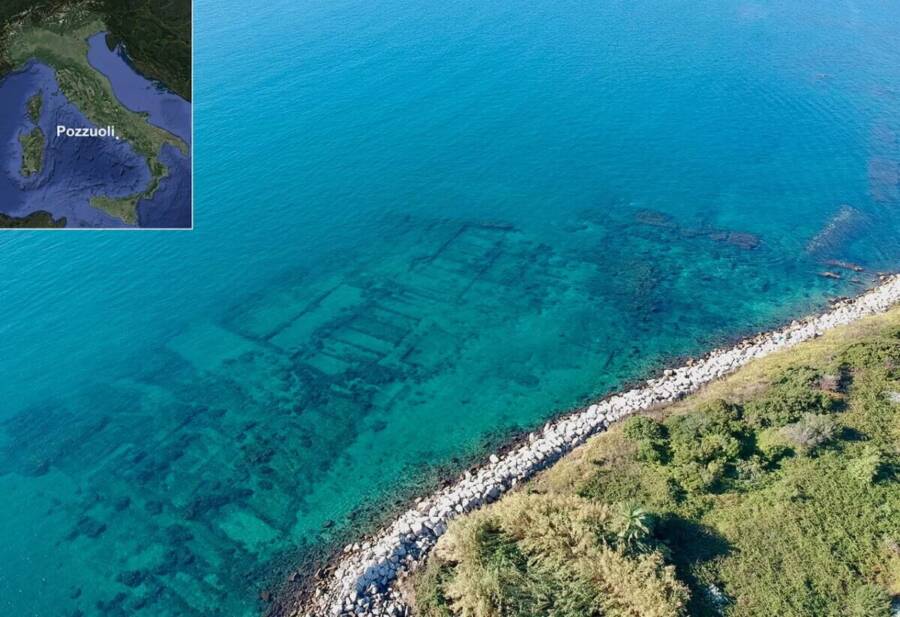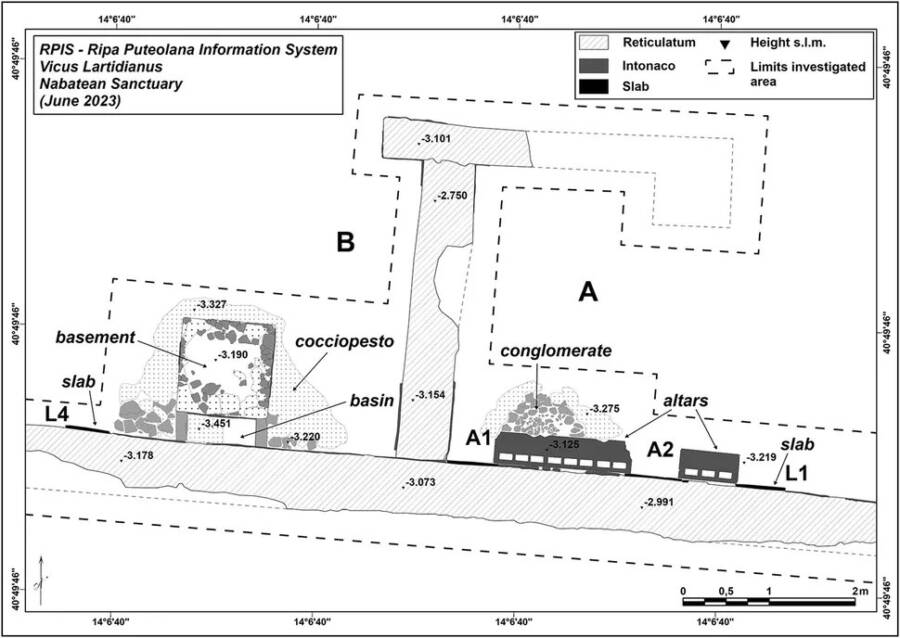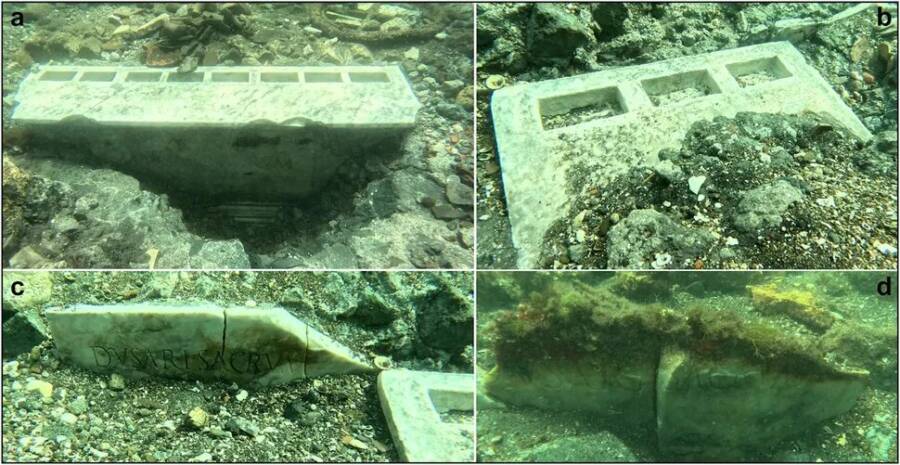The temple was dedicated to Dushara, a supreme god of the Nabataean civilization, which thrived in northern Arabia from the fourth century B.C.E. until it was annexed by the Roman Empire in 106 C.E.

M. Stefanile/AntiquityThe submerged Nabataean temple off the coast of Pozzuoli, Italy.
In the first and second centuries C.E., Pozzuoli, Italy — or Puteoli, as it was known at the time — was an important Roman port city. The Nabataeans, who hailed from northern Arabia, traveled there to trade their luxury goods, and they established a temple to Dushara along the port. Over time, volcanic activity altered the coastline and submerged parts of Puteoli. Archaeologists have been finding evidence of the temple since the 18th century, but they were never able to locate it — until now.
Last year, researchers finally found the temple while mapping the seafloor off the coast of Pozzuoli. The ancient structure contained two rooms separated by Roman-style walls, altars made of white marble, and inscriptions dedicated to Dushara, the primary god in the ancient Nabataean religion. Archaeologists also discovered that the temple was intentionally buried when the Nabataeans left the region, raising questions about when — and why — they abandoned the port.
Archaeologists Uncover The Submerged Nabataean Temple Near Pozzuoli
Researchers weren’t planning to find the long-lost Nabataean temple when they began mapping the seafloor off the coast of Pozzuoli in 2023. As Michele Stefanile, an author of the study about the temple that was recently published in Antiquity, noted, “For me this was one of the most unexpected discoveries.”
The research team noticed two rooms beneath the surface of the water, and when they took a closer look, they realized they were separated by Roman-style walls and contained Latin inscriptions that read, “Dusari sacrum,” meaning, “consecrated to Dushara,” the main Nabataean god. One of the rooms contained two white marble altars with spaces for stones that were sacred to the religion of the Nabataeans.

M. Stefanile/AntiquityAn illustration of the temple’s layout.
Archaeologists aren’t sure what the temple looked like, but it may have been an open-air sacellum, or shrine. “It seems that we have a building dedicated to the Nabataean gods, but with Roman architecture and Latin inscription,” Stefanile told Live Science.
So, who exactly were the Nabataean people?
The Nabataean Civilization And Its Influence In Ancient Rome
The Nabataean kingdom was located in northern Arabia, but its trade routes stretched as far west as Italy. The Nabataeans created the famous tomb carved into the desert stone in Petra, Jordan, known as “The Treasury.” Parts of Indiana Jones and the Last Crusade were filmed at the ancient site, though the plot of the movie has nothing to do with the true history of the Nabataeans.
The wealthy Nabataean people traded luxury goods like gold, ivory, and perfumes. It’s evident why they would have wanted to establish a presence at a busy Roman port. Steven Tuck, a Roman historian at Miami University in Ohio, told Live Science, “It makes perfect sense that the Nabataeans would be in Puteoli as a community of traders. Nabataeans would have been drawn there and brought their religious practices with them.”

M. Stefanile/AntiquityWhite marble altars and inscribed slabs were uncovered at the site.
The Nabataeans seemingly enjoyed trade privileges in the Roman Empire until Emperor Trajan annexed their kingdom in 106 C.E. Suddenly, Nabataea was under Roman control, and the civilization’s trade routes changed dramatically.
Around this time, the temple in Puteoli was abandoned and subsequently filled with the mixture of concrete and broken pottery. Romans held strong beliefs about desecrating sacred spaces, even those that they did not recognize, so they likely chose to fill up the temple and build over it as opposed to destroying the structure.
“Possibly after Trajan’s conquest of Arabia in 106 [C.E.], the Nabataeans had no more possibility of free trading in Puteoli, and they possibly abandoned the harbor,” said Stefanile. This annexation seemingly marked the end of Nabataean influence in ancient Rome, with only remnants left behind for archaeologists to discover 2,000 years later.
After reading about the Nabataean temple off the coast of Italy, dive into the story of Baiae, the “Las Vegas” of ancient Rome that is now submerged underwater. Then, view 29 fascinating images of temples and places of worship around the world.





